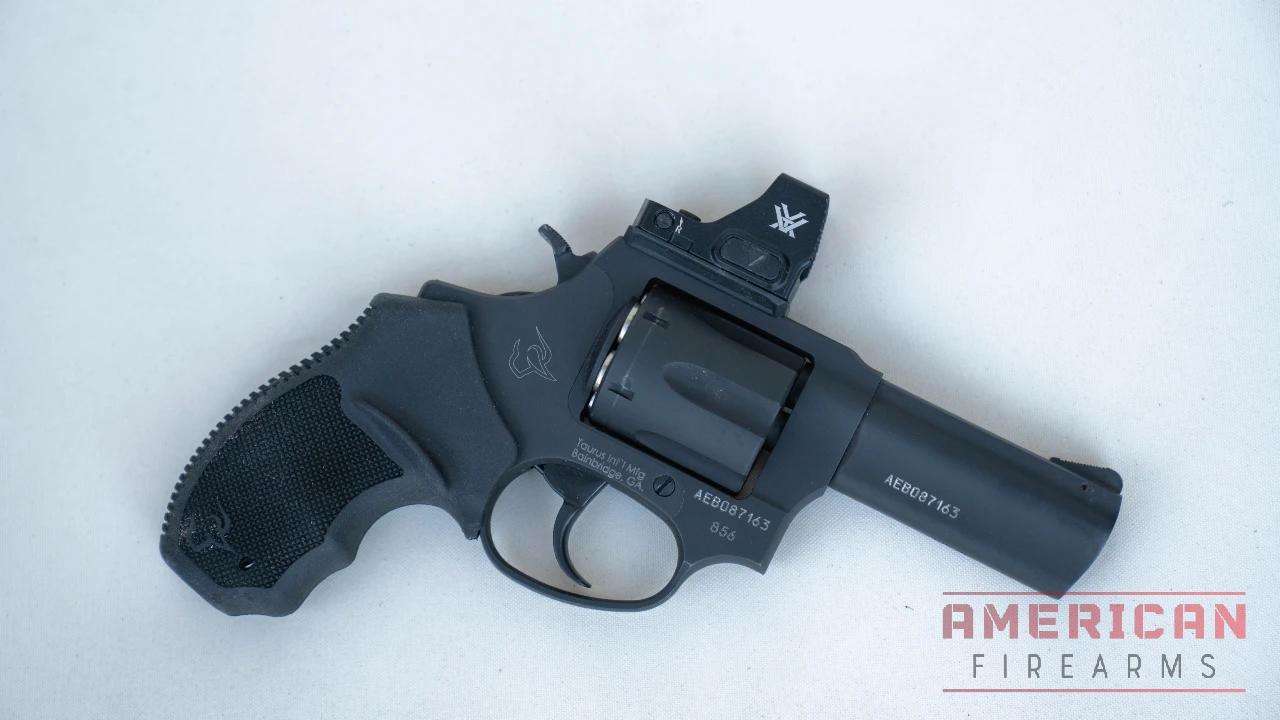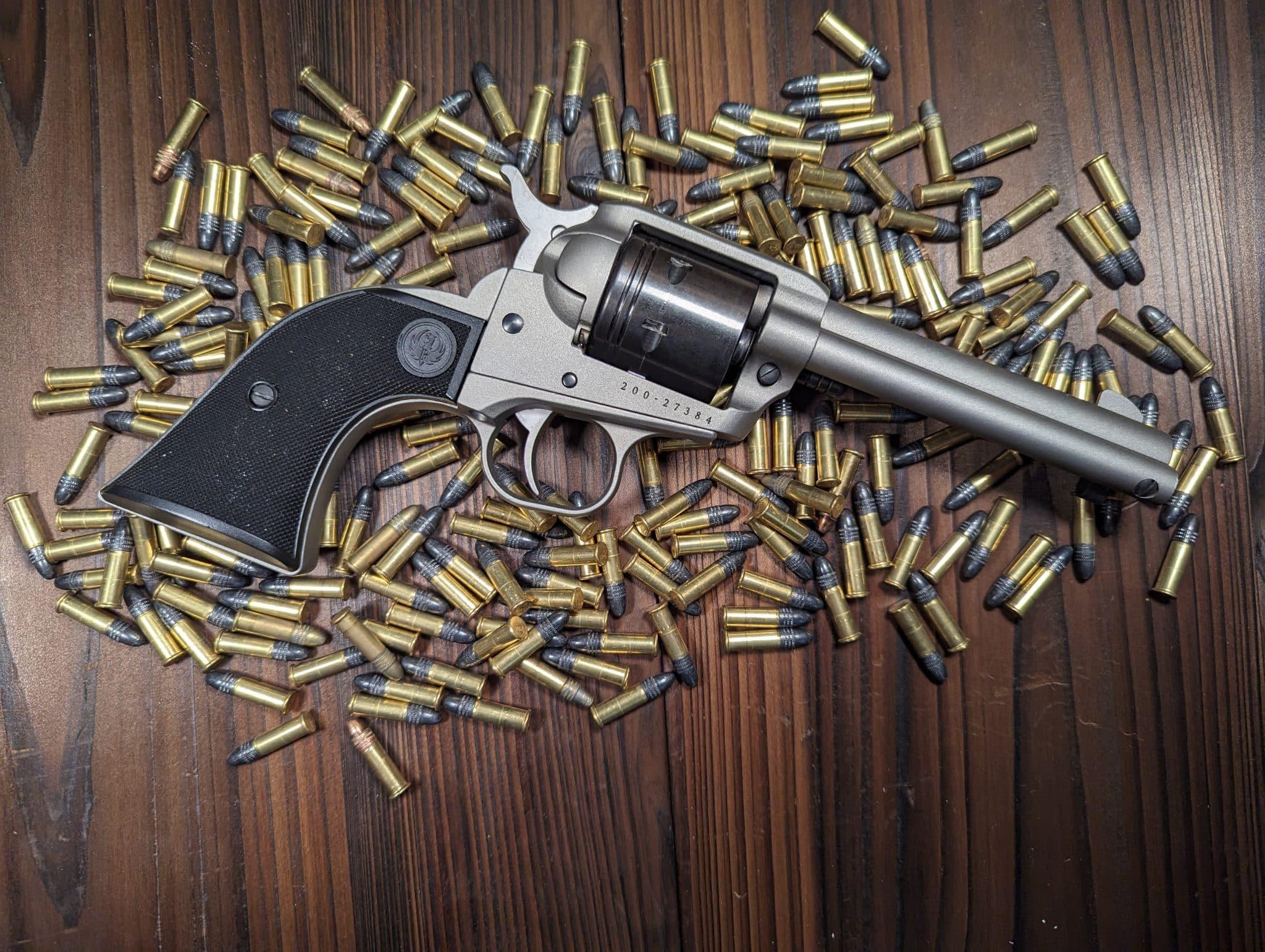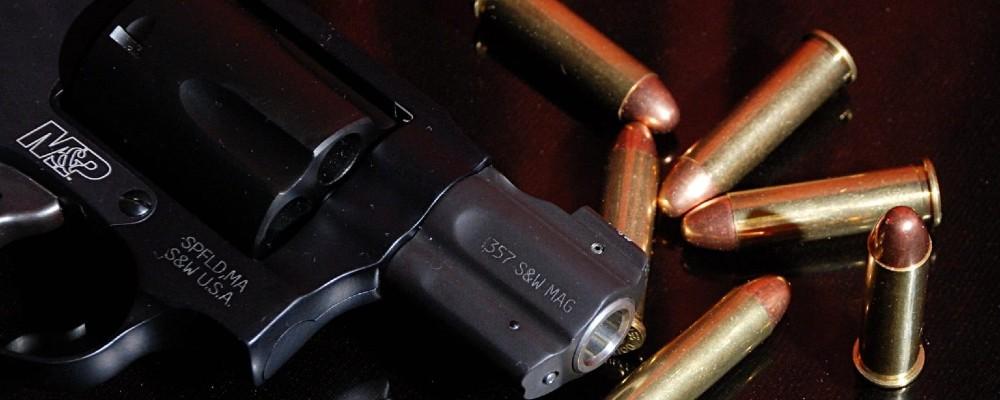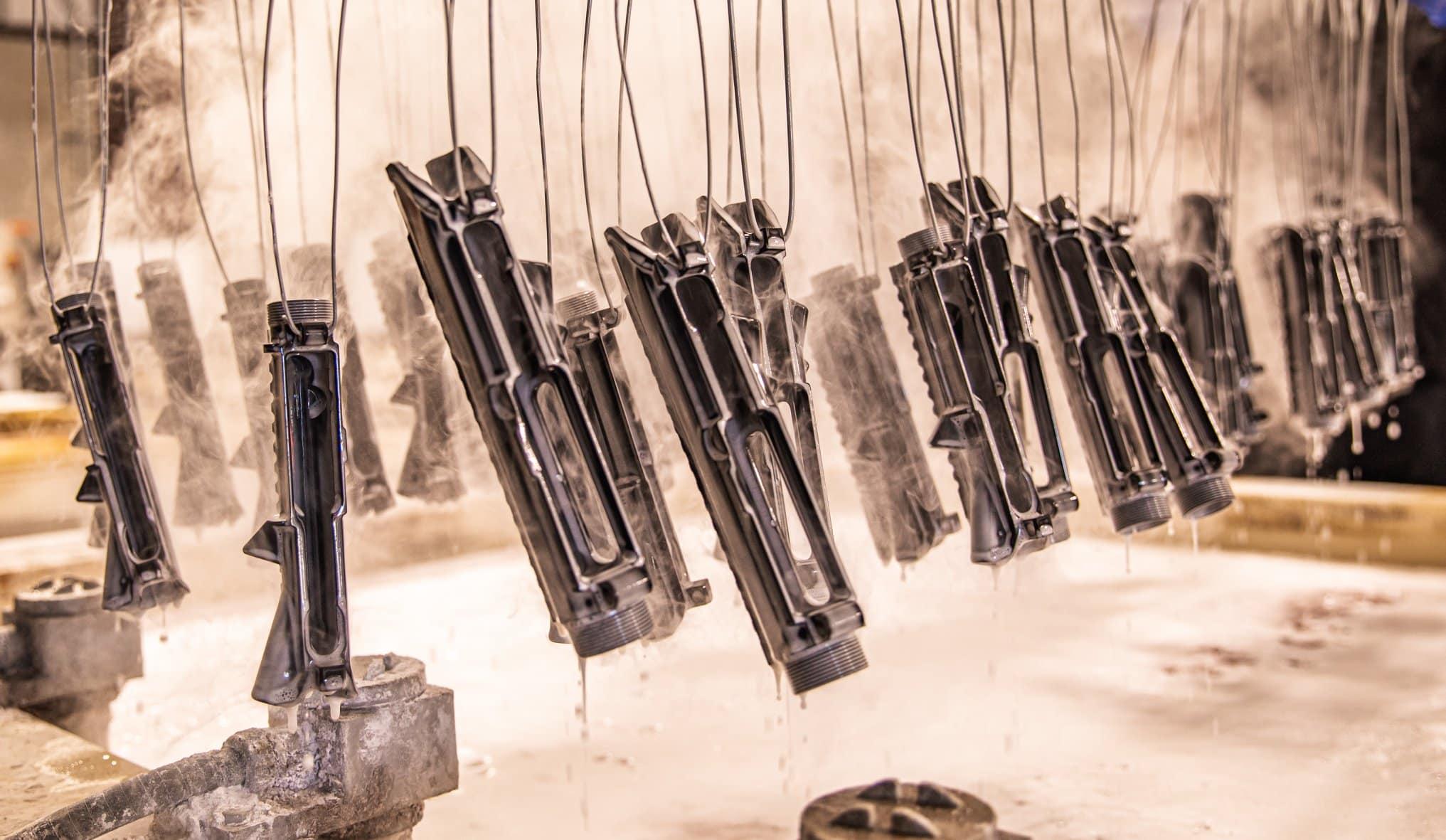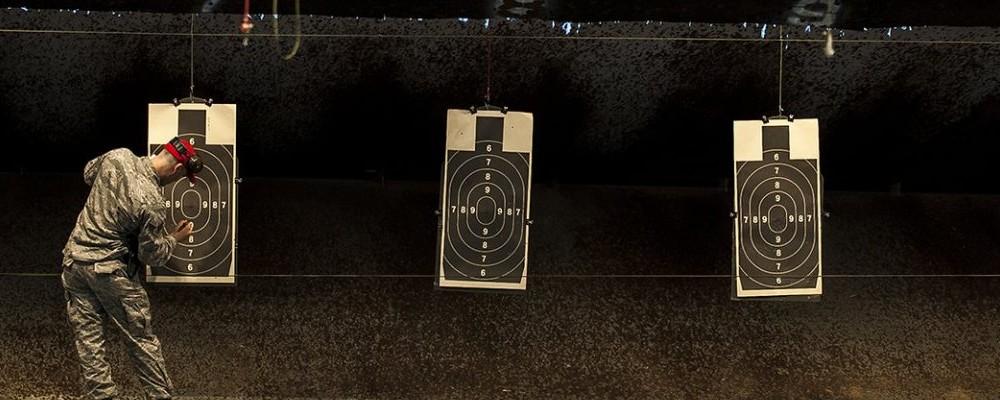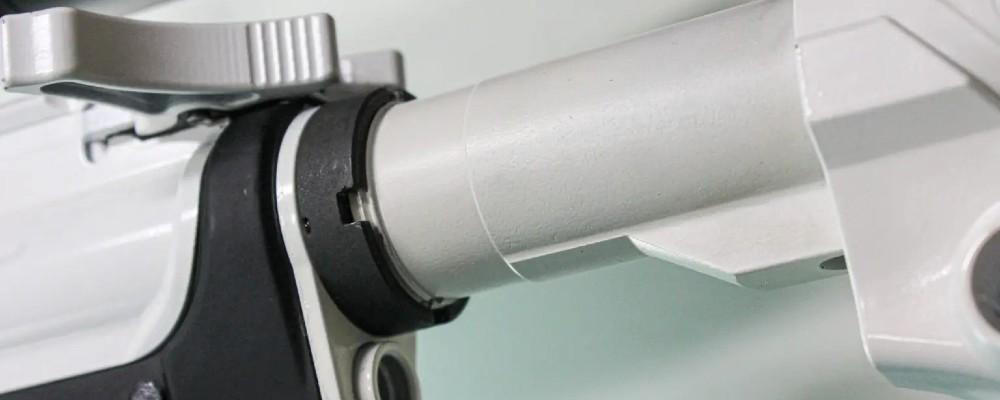Glock 22 Review
The Glock 22 (along with its siblings, the compact G23 and subcompact G27) are Glock’s .40 Auto pistols and have been LE staples across the US for decades, but is a G22 right for you?
Written By
Michael Crites
Licensed Concealed Carry Holder
Reviewed by
Editorial Team
Learn About The Editorial Team
Share:
Products are selected by our editors. We may earn a commission on purchases from a link. How we select gear.
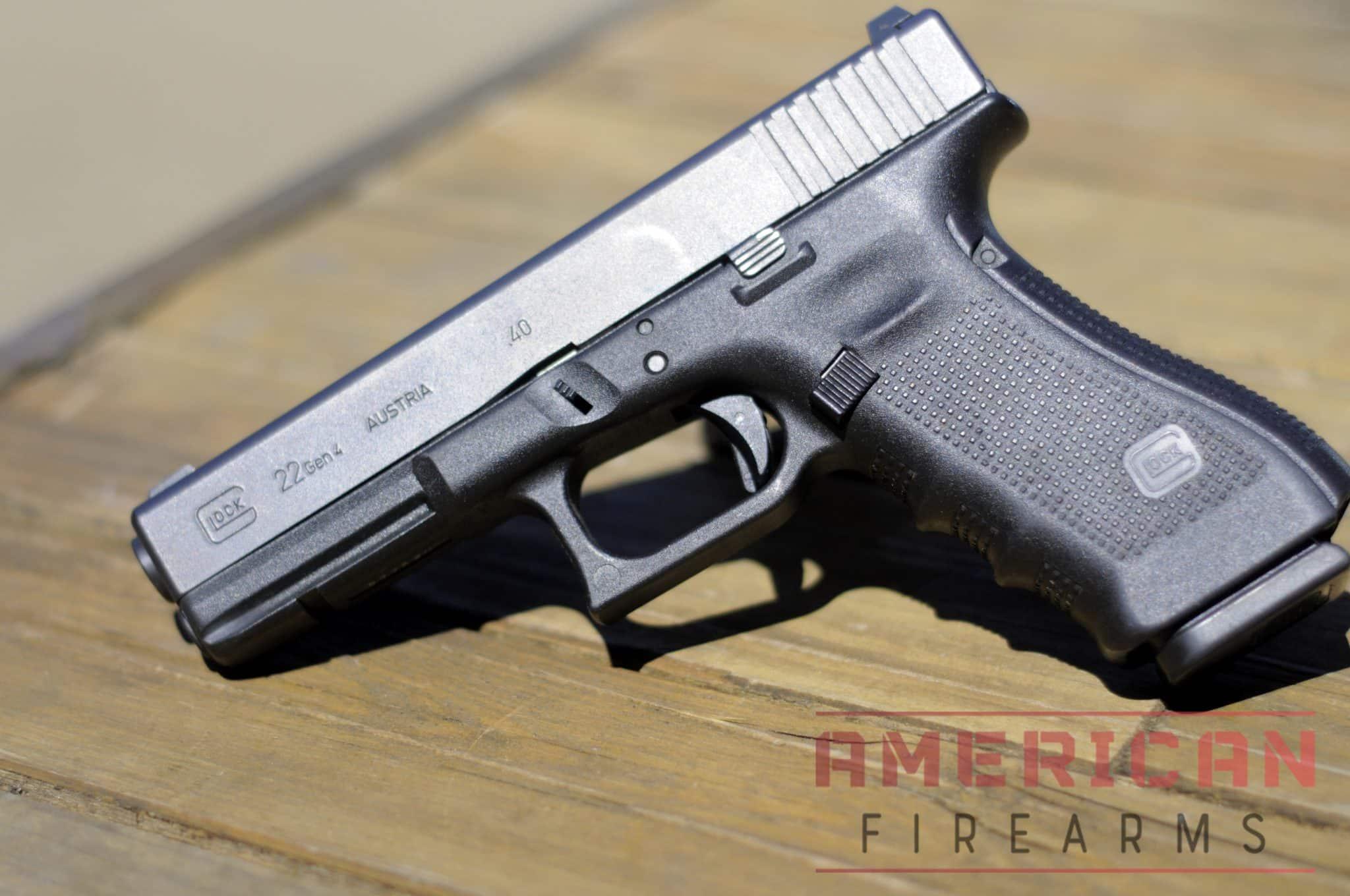
Updated
Mar 2023
The Glock 22 (along with its siblings, the compact G23 and subcompact G27) are Glock’s .40 Auto pistols and have been incredibly popular with law enforcement across the US for decades. They offer up pistols chambered in the larger LE-focused cartridge while being identical in size to the 9mm G17, Glock 19, and G26 pistol lineup.
Way back in the parachute-panted, drum-and-bass-filled Nineties, the 9mm was getting pushback from LE agencies across the country due to concerns about penetration and stopping power stemming from performance shortcomings in the 1986 Miami shootout. When agents were less than keen on the pivot to the 10mm Auto, S&W and Winchester cooked up the .40 S&W Auto, leading to the 10mm and Georg Luger’s 9mm cartridge getting dropped like a bad habit — replaced, practically overnight, by the new gee-whiz LE wonder cartridge, the .40 S&W.
Glock brought the Glock 22 to market along with the G23 in 1990, and the rest, as they say, is history.
When the fine folks at Guns.com offered up a used LE G22 Glock pistol for me to put through its paces, I was more than happy to share my take on the original .40 Auto Glock.
In This Article
History

By the mid-nineties, with the introduction of the G26, Glock had a trifecta of 9mm pistols in the market: the full-size G17, compact G19, and subcompact G26. This simple family of Glocks gave them pistols matched to the needs of their customers: peace officers and military customers could run a full-sized pistol, plainclothes officers and concealed carry fans could run the compact, and the subcompact G26 gave deep conceal carry and backup options.
Not only did these three options suit most scenarios, but they could also all run the same magazines — no need to worry about different magazines for each pistol. Gaston Glock’s universe was indeed balanced.
Then whispers started about this new gee-whiz caliber — the .40 S&W Auto.
After a 1986 Miami shootout in which insufficient penetration from a 9mm round fired by an FBI agent enabled a shooter to kill 2 FBI agents and wound a third, the FBI wanted a pistol that could offer superior stopping power and went with the logical choice at the time; the 10mm Auto.
Despite the additional power, the 10mm cartridge proved less than popular with agents due to its rowdy nature.
In an effort to manage the 10mm Auto’s fallout with agents — it was notoriously challenging to control, and the large S&W Model 1076 was a real issue with agents without bear mitts — the Feds developed a lower power 10mm load called the FBI Lite Load that promised less recoil and more control but was ultimately found to be only marginally better than the original.
Smith & Wesson took heed and worked with Winchester to develop a more approachable LE cartridge. They duplicated the 10mm Auto FBI Lite Load but shrunk the cartridge down so it would fit in a 9mm pistol-sized frame. With that, the .40 S&W Auto was born and took off with law enforcement like wildfire.
The .40 S&W offered up similar accuracy and trajectory as the familiar 9mm but with more energy and, most importantly, none of the irritating recoil of the 10mm Auto — making it more powerful than the nines of the time and easier to keep on target than the centimeter cartridge.
Glock seized on the .40 S&W’s momentum with police departments and was the first manufacturer to bring a new family of .40 S&W pistols to market; moving away from prior models focus on the 9mm, the full-size G22 and compact G23 hit the streets in 1990, and the subcompact G27 came to market in 1995.
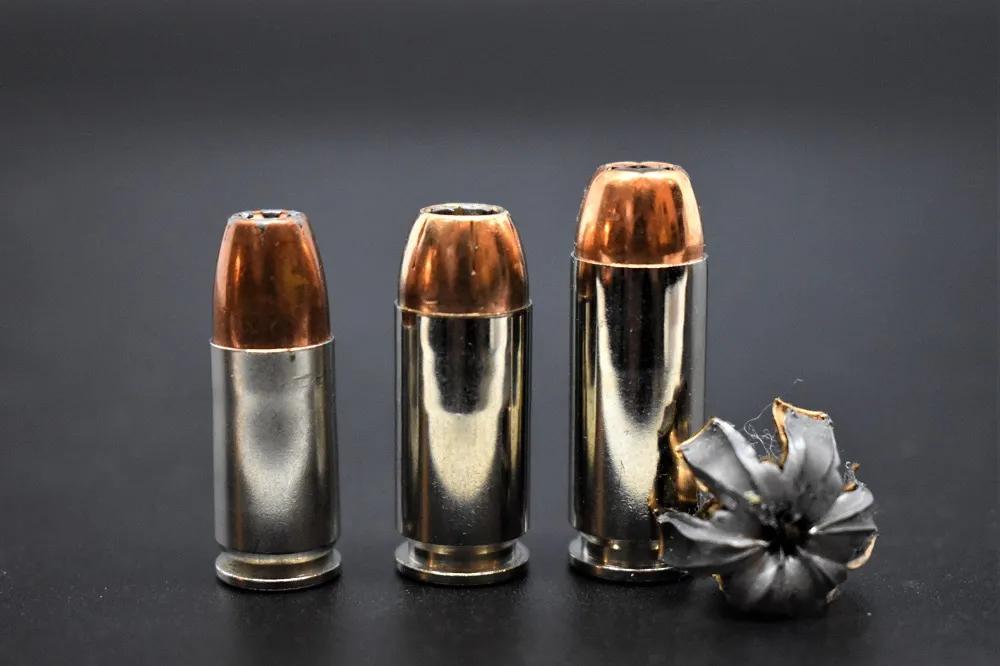
Glock helped law enforcement agencies transition to the .40 Auto caliber with a trade-in program, allowing them to swap their 9mm Glocks for .40 Auto guns. The fact that G22 and G23 pistols are the same dimensions as the G17 and G19 9mm pistols meant holsters and magazine pouches could all be retained, and there was no need for additional training — the pistols were the same size and operated identically.
While the recent trend is for LE agencies to convert back to 9mm from the once reigning .40 Auto, these .40 Auto caliber Glocks are still incredibly popular with LE and civvy shooters alike.
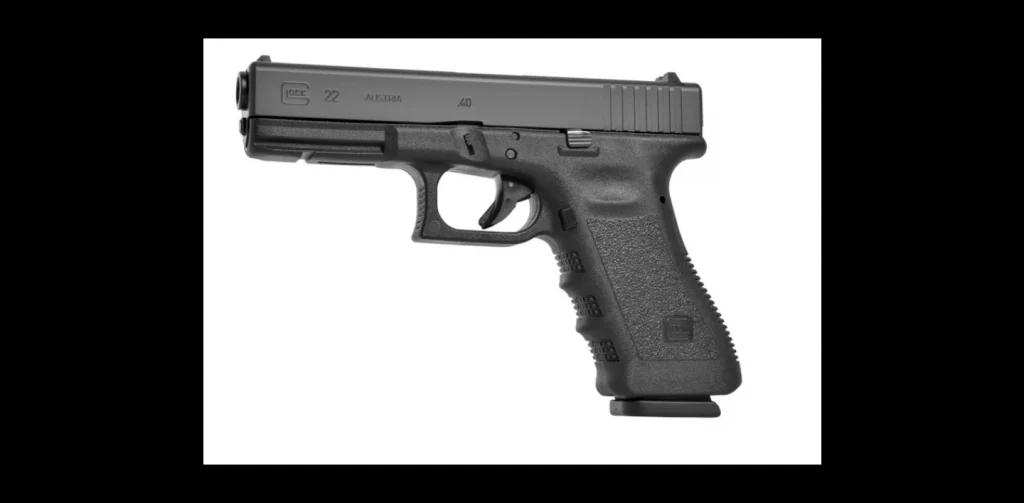
$429.99

56
EXCEPTIONAL
2026 Awards & Rankings
Performance Scores
Glock 22 Specifications
Caliber: | .40 S&W |
Capacity: | 15 (2 Magazines Included) |
Action: | Striker-Fired |
Trigger Pull Weight: | 6.29 lbs |
Length: | 7.95 in |
Height: | 5.47 in |
Width: | 1.26 in |
Barrel Length: | 4.49 in |
Weight: | 22.1 oz. (with empty magazine) |
Slide: | Alloy steel / rear serrations |
Sights: | Steel / fixed front white dot |
Safeties: | Glock Safe Action System (Trigger / Firing Pin / Drop Safeties) |
Operational Controls Finish: | Polymer |
MSRP: | $699 |
Real-World Price: | $400-$600 |
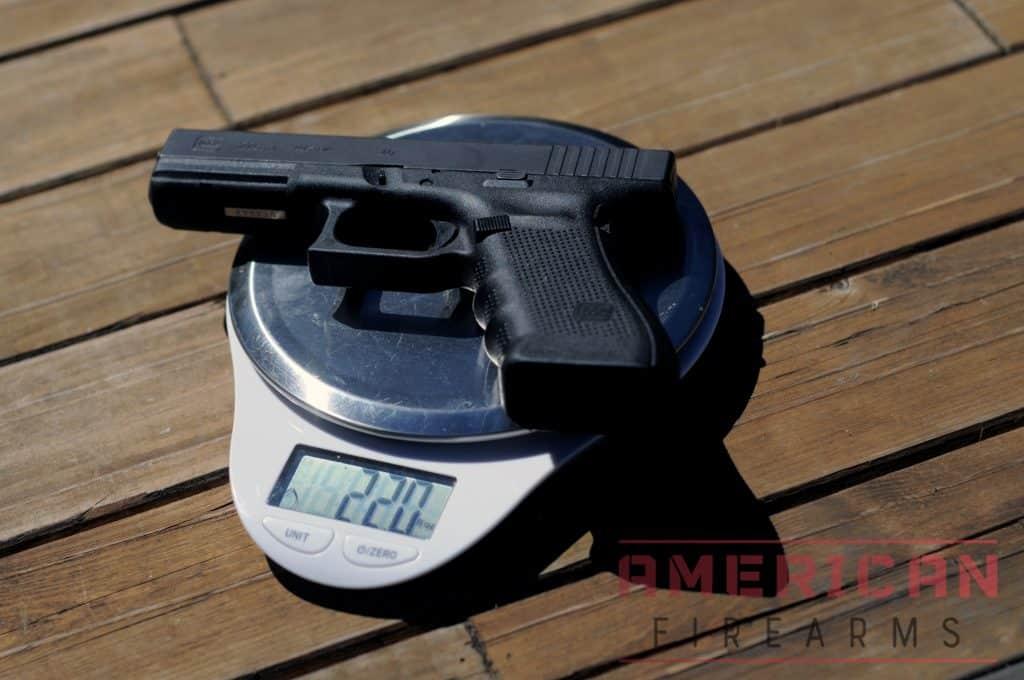
Features
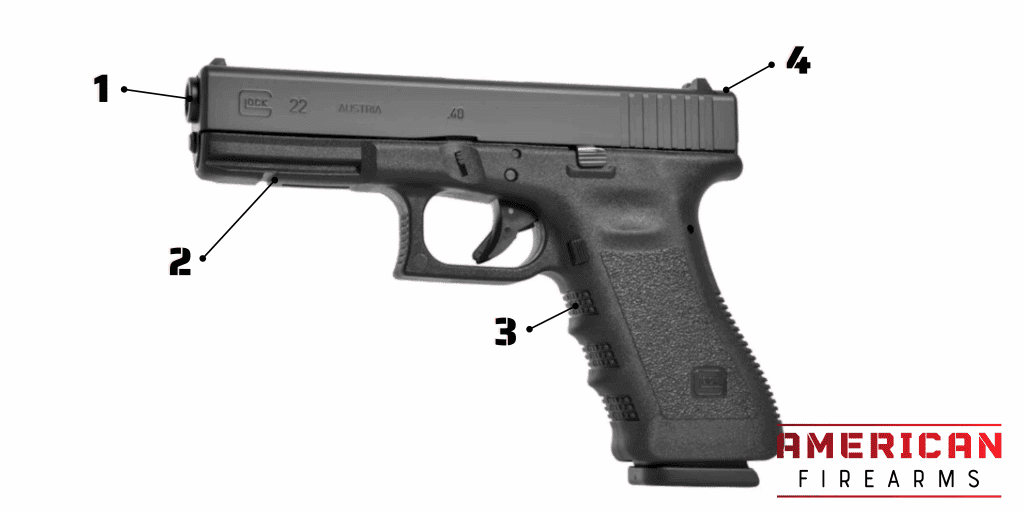
.40 S&W Chambering
Features the heavier, LEO favorite, the .40 S&W.
Full-Size Rail
No limit on light or laser sizes.
15+1 Capacity
Double–stack mags give you solid capacity despite larger diameter cartridges.
Glock Reliability
Striker-fired action & Glock build gives you class-leading reliability.
First Impressions
Upon opening the factory Glock case, a few things jumped out to me:
- The G22, despite being chambered in the larger .40 SW cartridge, was lighter than I anticipated in-hand
- The controls — specifically the mag release — are larger than Gen3s and functional but provide little tactile feedback
- Factory sights are white-dot, clear, and usable
- Slide serrations are vertical
- The grip is larger than I anticipated
- The slide stop release is stiff and small
While these are my initial impressions, I took broke the pistol down to assess the component pieces and then headed to the range. Let’s dive in.
Slide
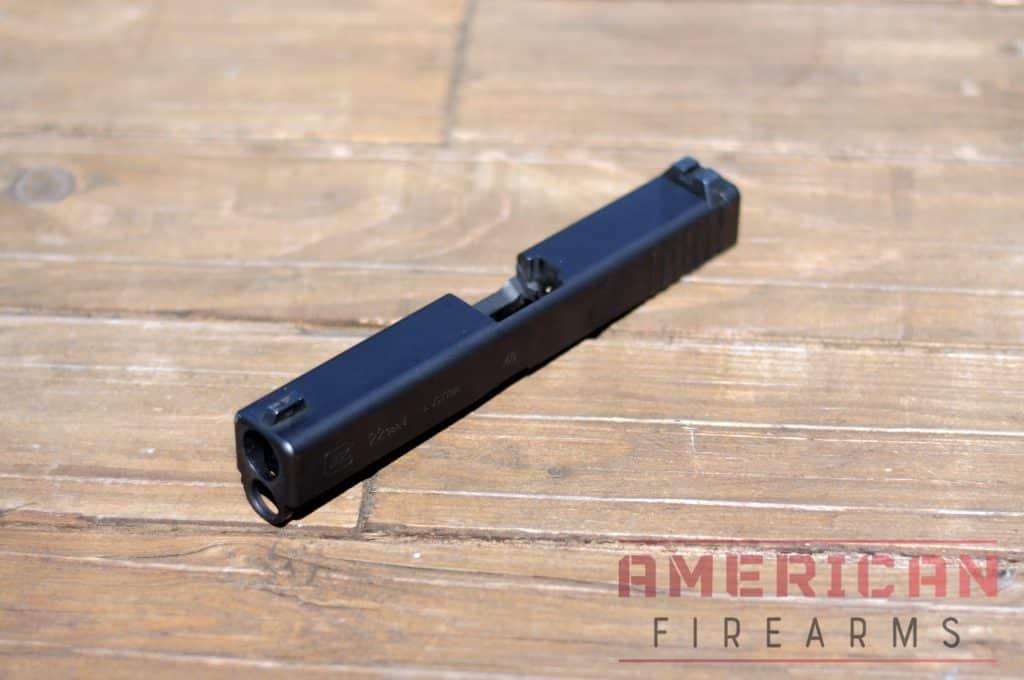
Takedown is quick and as straightforward as any other Glock — you just flip it over, give the slide a little tension and pull the takedown levers on both sides of the slide. Release and pull the slide forward to slip it off the frame.
The slide’s vertical serrations provide enough grip to make racking the pistol straightforward, and the Melonite finish is smooth and consistent from barrel to butt plate.
Milling is clean, and high quality — and given more than 80% of the Glock’s weight is in the steel components, the slide is certainly the heaviest portion of the pistol despite the serration. Once atop the pistol, it feels decidedly balanced. The slide is not milled for optics.

Sights

The white dot sights are clear, usable, and create a nice sight picture. They are, however, not replaceable as this was a service model.
Rear is drift adjustable.
Controls
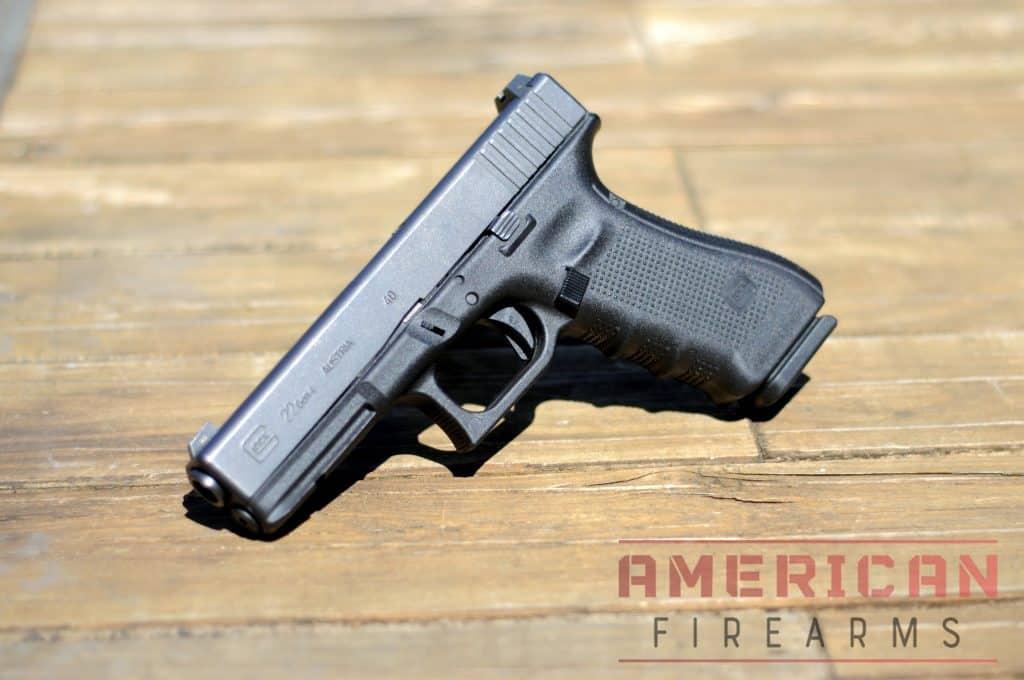
The mag release is larger than Gen3 models and easy to actuate with mid-sized hands. It consistently dropped the stick when needed in my testing. Feel is a tad vague, but it does the trick — it’s also reversible.
The slide stop I found small and tough to actuate when retaining the slide, but it kept the last round hold open working consistently and chambered the first round of the next mag without fail.
The body has cutouts on both sides of the grip to enable the user to run the mag release on either side of the grip frame, so southpaws, rejoice!
Magazines

Glock supplies the G22 with two magazines, each offering a capacity of 15 cartridges — of course, those in capacity-restricted states have to make do with 10-round sticks.
The steel-bodied magazines are encased in polymer, helping to keep dents and scratches at bay. Mags employ a black follower and have witness holes at the 4 through 15-round mark to allow the user to determine how much more they have on tap.
A brighter follower would have been welcome to better gauge whether the mag is empty or not, but Glock does what Glock wants.
The bottom of the mag well is recessed away from the palm swell to allow the user to pry free a stuck mag. I could easily get my full thumb in the recess and gain solid purchase on the mag lip in the event of an obstinant mag.
Grip & Ergonomics
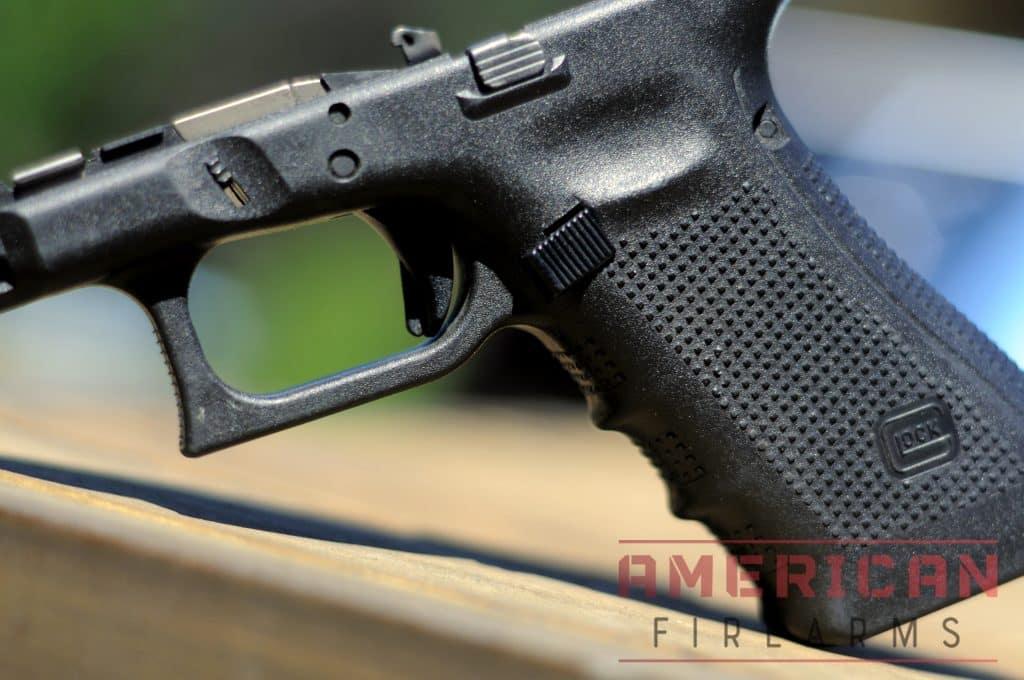
The grip on the G22 is less textured than stippled, which doesn’t offer the same level of retention and control other pistols do, such as the S&W Shield M2.0 we reviewed. The grip is also pretty large, with my pinky barely getting past the front finger groves.
That said, the slight stippling on the front of the grip coupled with the 22-degree grip angle did help with control at the range and the gun feels very comfortable and pointable in hand.
Trigger & Reset
The trigger was probably my least favorite aspect of the G22. It’s got a lot of takeup which makes it challenging to anticipate and fire at first blush. That said, after about 50 rounds, I could consistently get groups of 6 onto a 6-inch target at 20 yards, so once you get used to the trigger, the pistol shoots as well as the trigger will allow.
The reset isn’t terrible, but it could reset closer to the rear of the guard. The safety blade is the classic Glock-style, which is comfortable on the trigger finger and works without incident shot after shot. The best thing about the trigger safety is you simply forget it’s there.
Of course, there is a huge array of options when it comes to Glock triggers, so pick up a drop-in if you’ve had enough mush.
Barrel & Spring
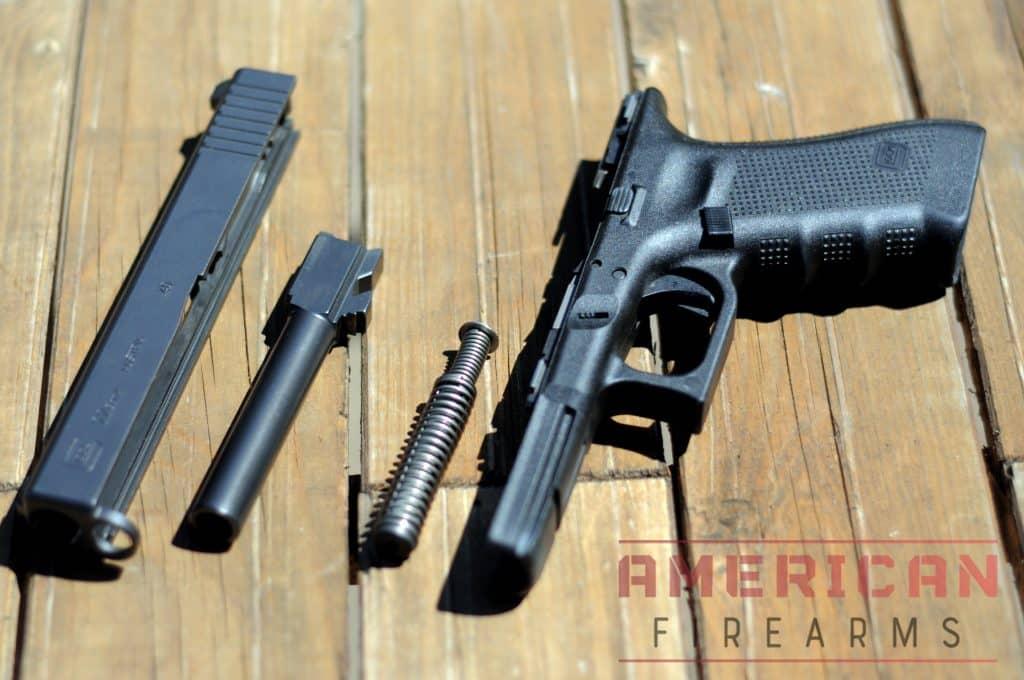
The G22 uses Glock’s 4th gen captive recoil spring, which is fitted with a dual recoil spring assembly. It’s designed to reduce perceived recoil and increase durability and service life.
The guide rod is also steel, which adds weight but prevents some of the issues with lighter polymer guide rods, such as those used on the Taurus G2C, which has incidents of the spring slipping over the end of the rod, creating an unusable pistol in the process.
The barrel on my test unit showed very slight feed ramp wear, but it in no way impacted performance, reliability, feeding, or accuracy.
If ramp wear or accuracy is an issue for you, check out our list of recommended Glock barrels.
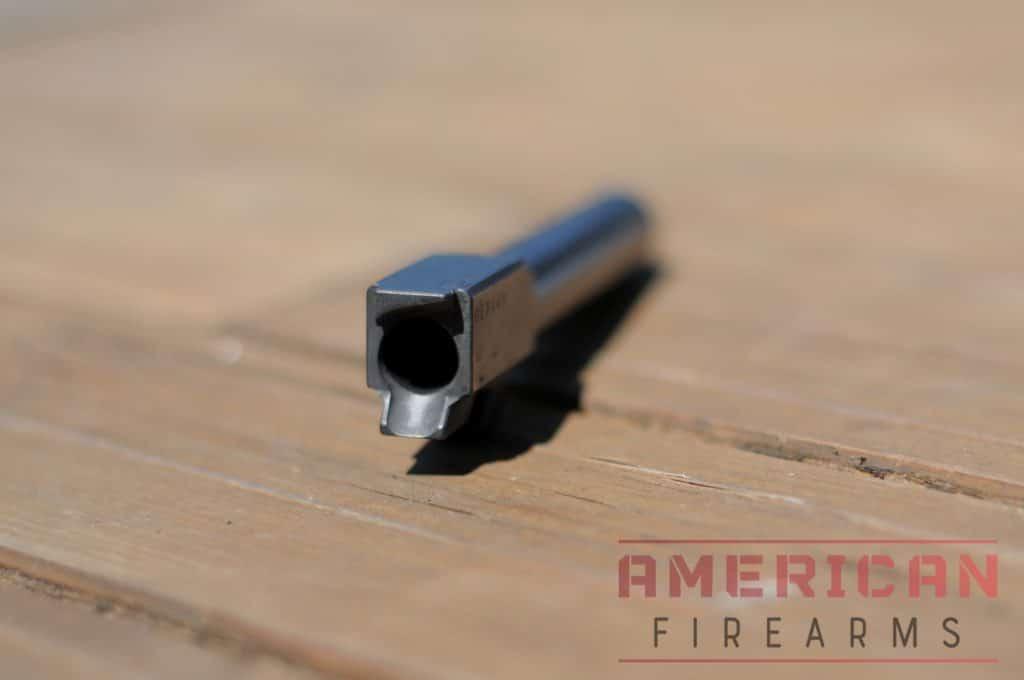
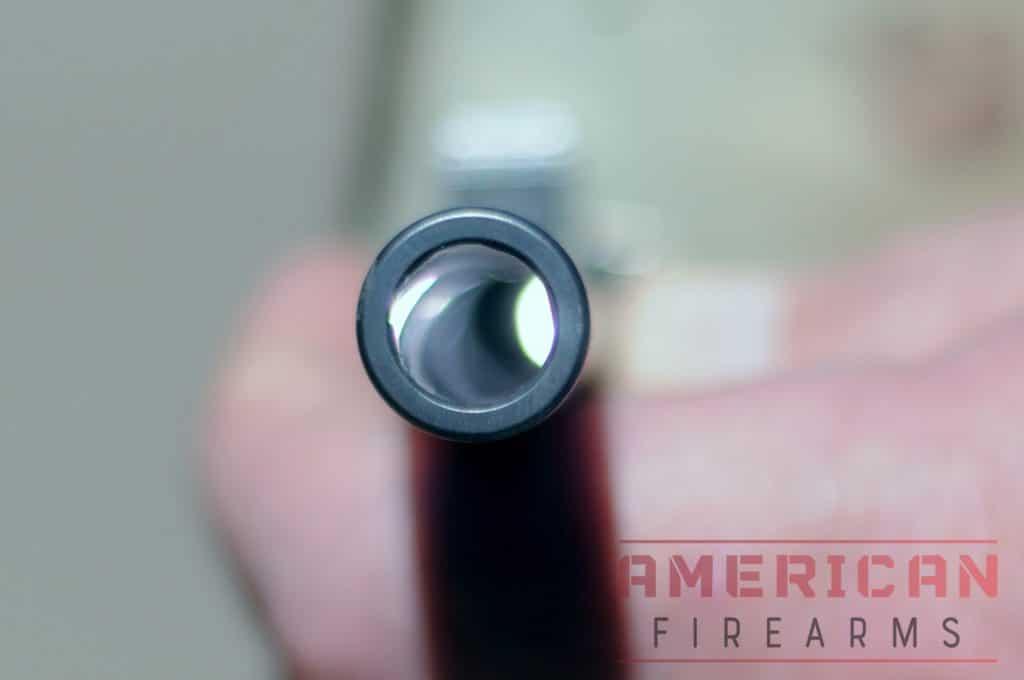
Range Report
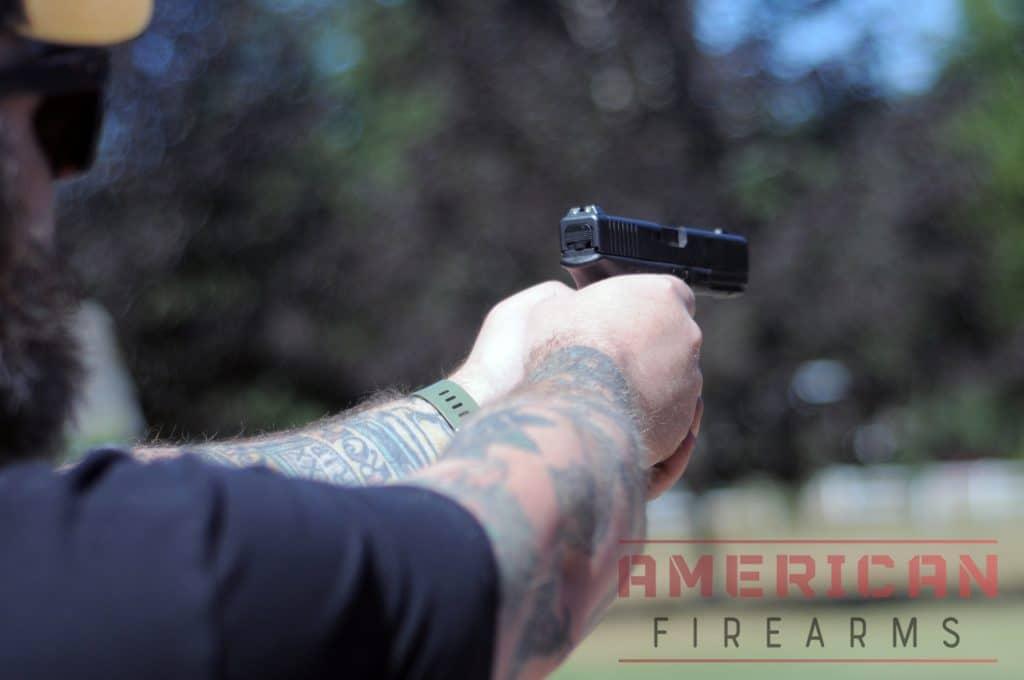
I set my target up at 20 yards, using an adhesive 6-inch target for all test shots. I loaded the G22 with 10 rounds of CCI Blazer Brass 40 S&W Ammo 180 Grain Full Metal Jacket, which has a stated muzzle velocity of 985 fps, and took aim.
The initial trigger pull was slightly gritty, and once the slack was pulled through, the shot broke with taut felt recoil and a skosh of muzzle flip. I’m not incredibly familiar with .40 SW, so the initial recoil was sharp but controllable thanks to the size of the grip and grip angle (as well as my overprepared grip given my lack of experience with the fatter .40 SW vs. 9mm.)
The sights coupled with the slack trigger made for a tough few initial shots. I should have used a bigger 11×17 target for the first few feelers as I gained familiarity with the G22, but after 10 rounds or so, I could get on target and move between paper and steel reliably and had no issues with rapid target acquisition. It’s an accurate pistol given the irons and stout little cartridge.
Casings were thrown to the right, nicely clear. After getting on target for 30 rounds or so, I pulled out my Caldwell Ballistic chronograph and tracked shot-by-shot velocities with the pistol, and hit the chrono.
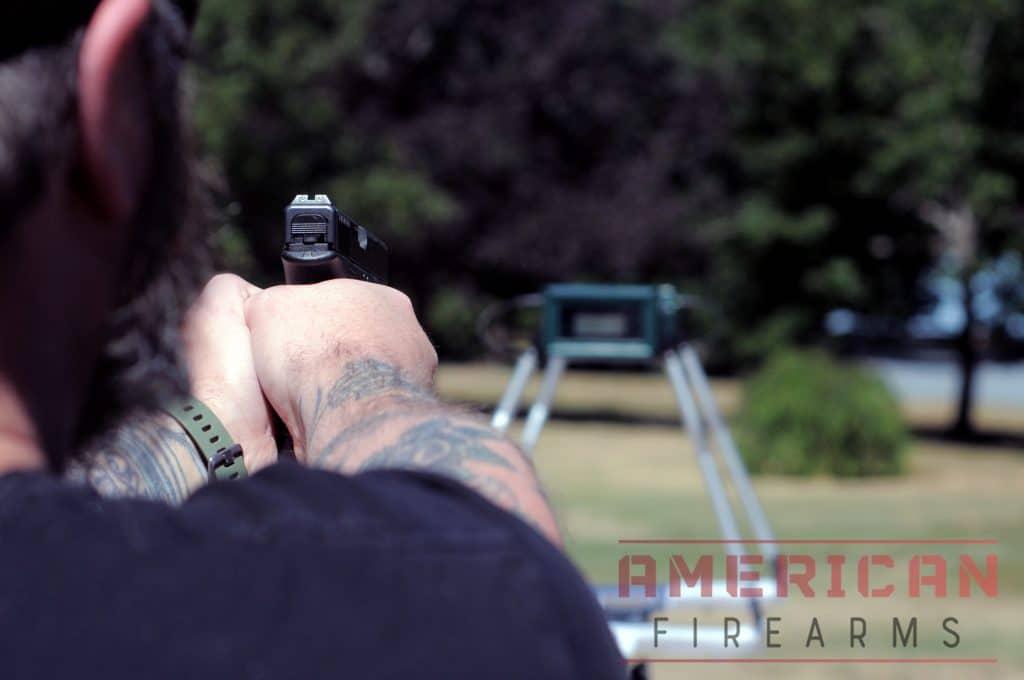
After about 100 rounds the G22 lived up to the storied Glock reliability — it just works. No quirks or issues at all, whether shooting fast, slow, with one bullet in the mag or 15.

Pros & Cons
Pros
- Solid Glock reliability
- Loads of used inventory on the cheap
- Controllable & easy to use
Cons
- Loads of trigger take-up
- Non-replaceable sights
- Not much in the way of grip texture
- Large grip can be difficult for smaller hands
Is the G22 right for you?
Maybe its the “Old Timer” in me, but I recall when the .40 came on the scene and all the promise it held — not unlike the new .30 Super Carry — the .40 wanted to split the lanes between the stopping power of the 10mm and the approachability of the 9mm set.
It did this incredibly well, winning legions of fans and LE users along the way.
While there’s no doubt the current users will continue to put the cartridge to use for some time, and availability isn’t a problem, there’s certainly an undercurrent that the .40 SW’s best days are behind it. Which is probably the correct conclusion.
That said, if you’re a Glock fan curious about this classic cartridge or have a ton of .40 SW stashed away and are interested in adding a Glock to your line-up, the G22 is probably the best starting point.
It’s a full-sized Glock that can be carried like any standard 9mm, marrying the familiar form factor to the more powerful cartridge without introducing any of the control issues of more compact pistols, like the G23 and G27. It’s not a perfect carry or self-defense pistol due to its size, but it’s a fantastically controllable Glock handgun that results in less felt recoil, making this balanced caliber accessible to most shooters.
This gun has rooted Glock firmly on the .40SW playing field, and while the caliber has been eschewed by the Feds and other orgs for the 9mm since 2016 (when the FBI awarded Glock an $85 million contract for G17 and G19 pistols), these stout performers are both inexpensive and capable — so much so that anyone interested in the .40 should consider putting a G22 in their safe (or under their bed).
Sources
- Washington Post. (2015) FBI returns to 9mm rounds, once shunned as ineffective
- Glock. Glock 22 Product Details
- Robert Sadowski. Book of Glock
Sign up for our newsletter
Get discounts from top brands and our latest reviews!





